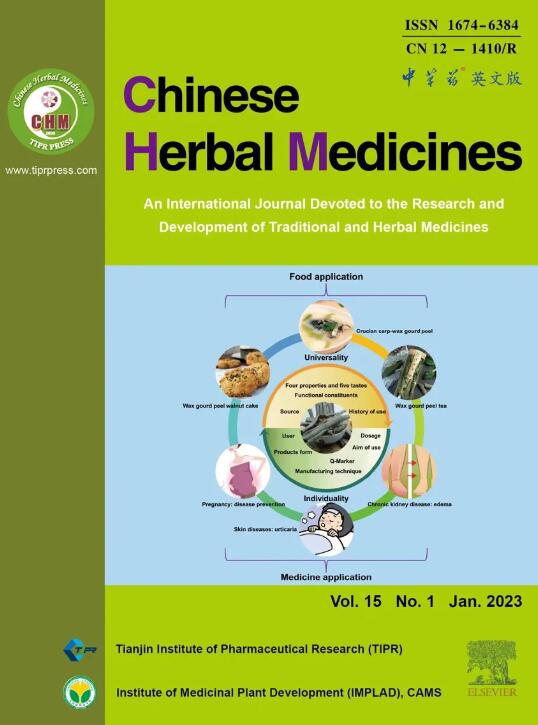TPMGD:巴基斯坦传统医药基因组数据库
IF 8.9
4区 医学
Q1 CHEMISTRY, MEDICINAL
引用次数: 0
摘要
目的在巴基斯坦,传统药物是医疗体系的重要组成部分,品种众多,需求量大。然而,由于资源分散,缺乏系统的收集和整理,传统巴基斯坦药掺假现象普遍存在,严重影响了传统巴基斯坦药的药用安全和进出口贸易。因此,系统地组织统一对TPM的管理,建立一套TPM识别的标准和可操作的方法迫在眉睫。方法根据巴基斯坦汉达德东药药典(药典)对128种中药的药用部位、疗效、用法、遗传物质等资料进行收集整理。从国家生物技术信息中心(NCBI)和全球药典基因组数据库(GPGD)中总结了TPM的遗传信息。此外,我们利用生物信息学技术对12种TPMs的叶绿体基因组(cp-genome)数据进行了补充。为了构建web服务器,我们使用了Linux + Apache + MySQL + PHP (LAMP)系统,并在PHP: Hypertext Preprocessor (PHP) model view controller (MVC)框架上构建了网页。结果构建了一个新的基因组数据库——巴基斯坦传统医学基因组数据库(TPMGD)。该数据库包括主页、药用物种、物种鉴定、基本本地比对检索工具(BLAST)和下载五个条目。目前,TPMGD包含128个TPMs的基本图谱和102个TPMs的遗传信息,包括家蚕140个细胞色素c氧化酶亚基I (COI)序列和119个线粒体基因组序列,以及92种和83种植物特有的1 396个内部转录间隔物2 (ITS2)序列和1 074个基因间区(psbA-trnH)序列。此外,TPMGD包括82个TPMs的199个cp基因组序列。结论tpmgd是一个集TPM物种描述、功能信息查询、遗传信息存储、分子鉴定等功能于一体的多功能数据库。该数据库不仅为TPM信息查询提供了便利,而且为TPM用药安全、品种鉴定、资源保护等工作奠定了科学依据。本文章由计算机程序翻译,如有差异,请以英文原文为准。
TPMGD: A genomic database for the traditional medicines in Pakistan
Objective
In Pakistan, traditional medicines are an important component of the medical system, with numerous varieties and great demands. However, due to the scattered resources and the lack of systematic collection and collation, adulteration of traditional Pakistani medicine (TPM) is common, which severely affects the safety of their medicinal use and the import and export trades. Therefore, it is urgent to systematically organize and unify the management of TPM and establish a set of standards and operable methods for the identification of TPM.
Methods
We collected and organized the information on 128 TPMs with regard to their medicinal parts, efficacy, usage, and genetic material, based on Pakistan Hamdard Pharmacopoeia of Eastern Medicine: Pharmaceutical Codex. The genetic information of TPM is summarized from national center for biotechnology information (NCBI) and global pharmacopoeia genome database (GPGD). Furthermore, we utilized bioinformatics technology to supplement the chloroplast genome (cp-genome) data of 12 TPMs. To build the web server, we used the Linux + Apache + MySQL + PHP (LAMP) system and constructed the webpage on a PHP: Hypertext Preprocessor (PHP) model view controller (MVC) framework.
Results
We constructed a new genomic database, the traditional Pakistani medicine genomic database (TPMGD). This database comprises five entries, namely homepage, medicinal species, species identification, basic local alignment search tool (BLAST), and download. Currently, TPMGD contains basic profiles of 128 TPMs and genetic information of 102 TPMs, including 140 cytochrome c oxidase subunit I (COI) sequences and 119 mitochondrial genome sequences from Bombyx mori, 1 396 internal transcribed spacer 2 (ITS2) sequences and 1 074 intergenic region (psbA-trnH) sequences specific to 92 and 83 plant species, respectively. Additionally, TPMGD includes 199 cp-genome sequences of 82 TPMs.
Conclusion
TPMGD is a multifunctional database that integrates species description, functional information inquiry, genetic information storage, molecular identification of TPM, etc. The database not only provides convenience for TPM information queries but also establishes the scientific basis for the medication safety, species identification, and resource protection of TPM.
求助全文
通过发布文献求助,成功后即可免费获取论文全文。
去求助
来源期刊

Chinese Herbal Medicines
CHEMISTRY, MEDICINAL-
CiteScore
4.40
自引率
5.30%
发文量
629
审稿时长
10 weeks
期刊介绍:
Chinese Herbal Medicines is intended to disseminate the latest developments and research progress in traditional and herbal medical sciences to researchers, practitioners, academics and administrators worldwide in the field of traditional and herbal medicines. The journal's international coverage ensures that research and progress from all regions of the world are widely included.
CHM is a core journal of Chinese science and technology. The journal entered into the ESCI database in 2017, and then was included in PMC, Scopus and other important international search systems. In 2019, CHM was successfully selected for the “China Science and Technology Journal Excellence Action Plan” project, which has markedly improved its international influence and industry popularity. CHM obtained the first impact factor of 3.8 in Journal Citation Reports (JCR) in 2023.
 求助内容:
求助内容: 应助结果提醒方式:
应助结果提醒方式:


